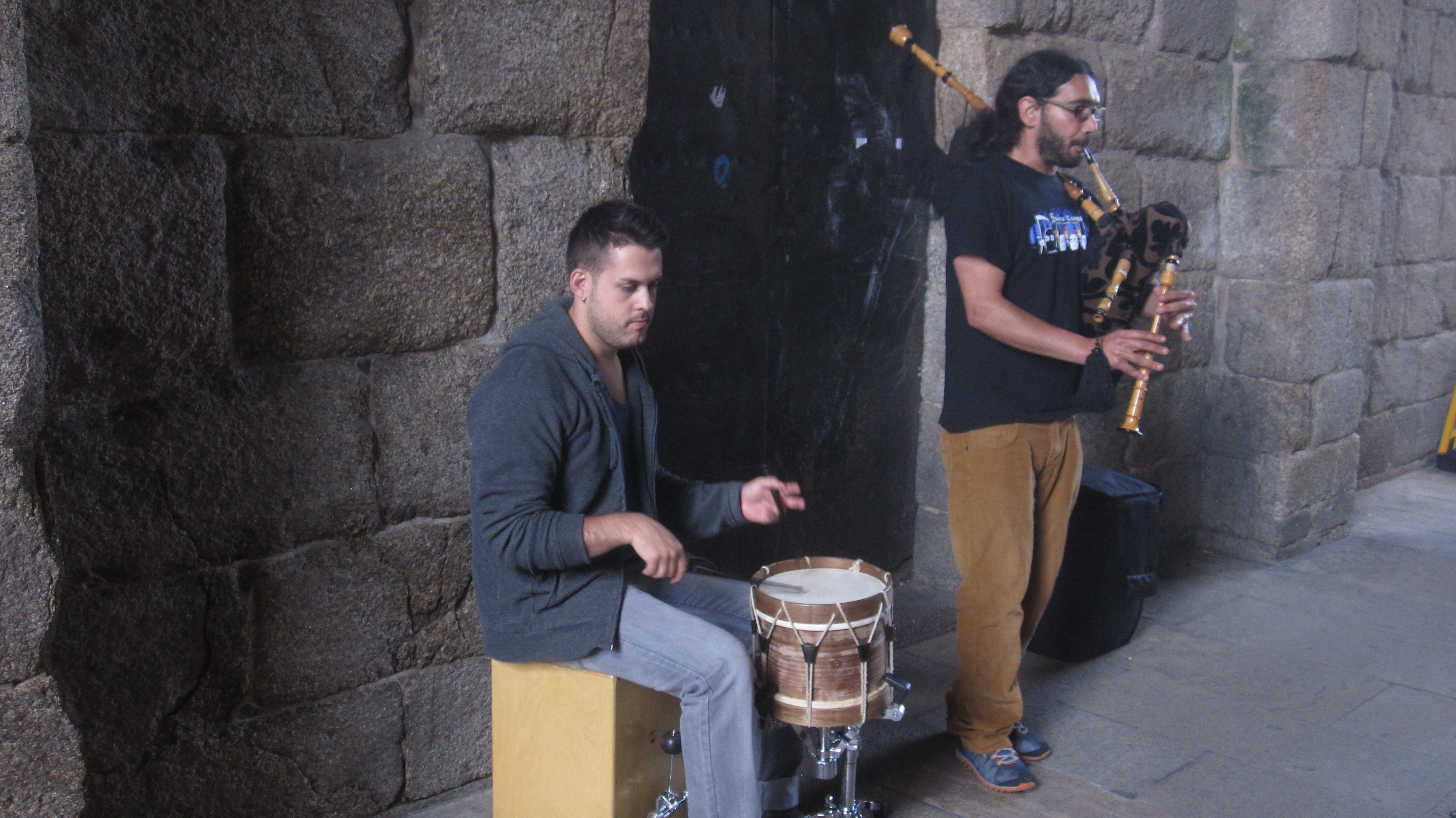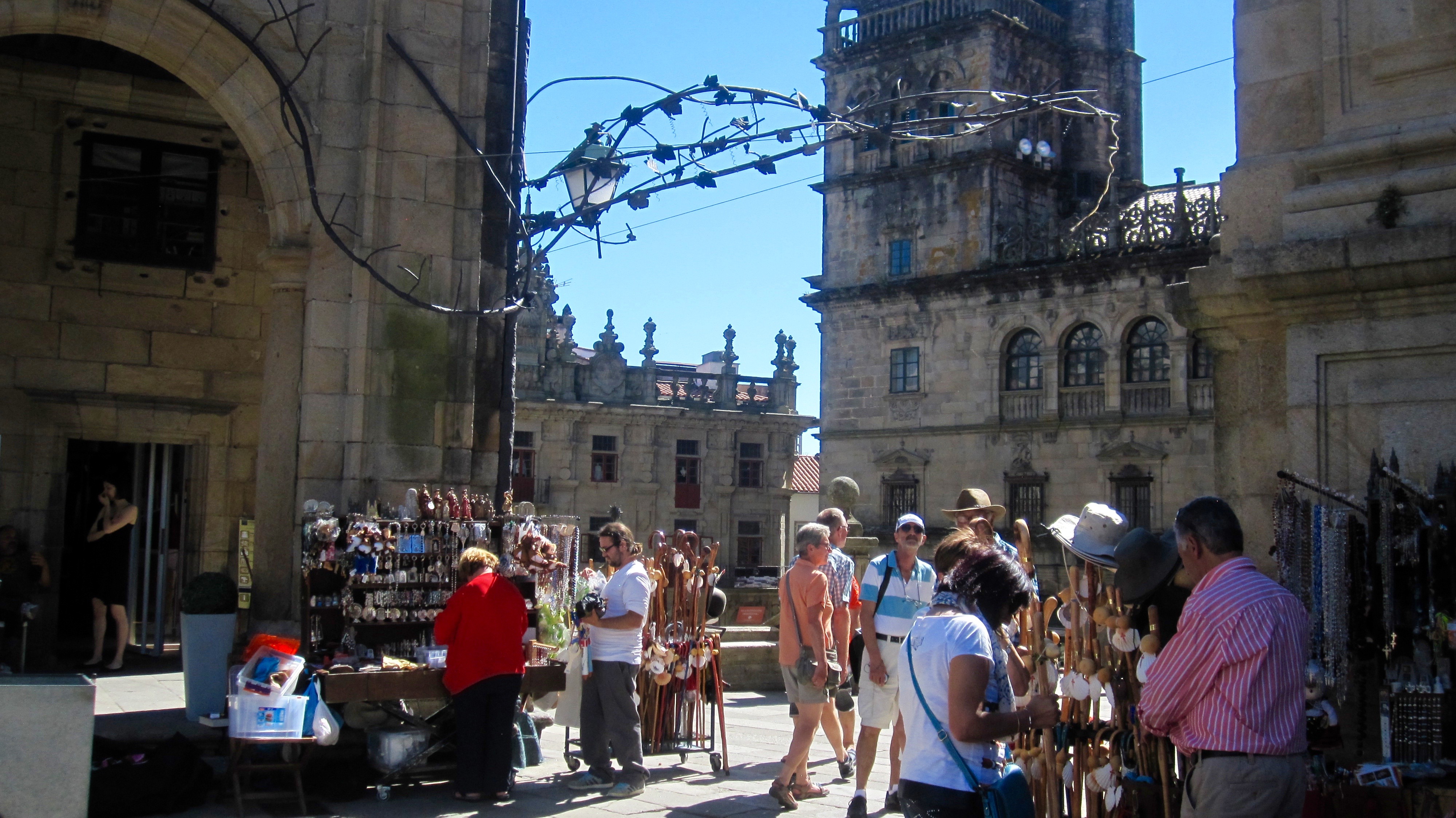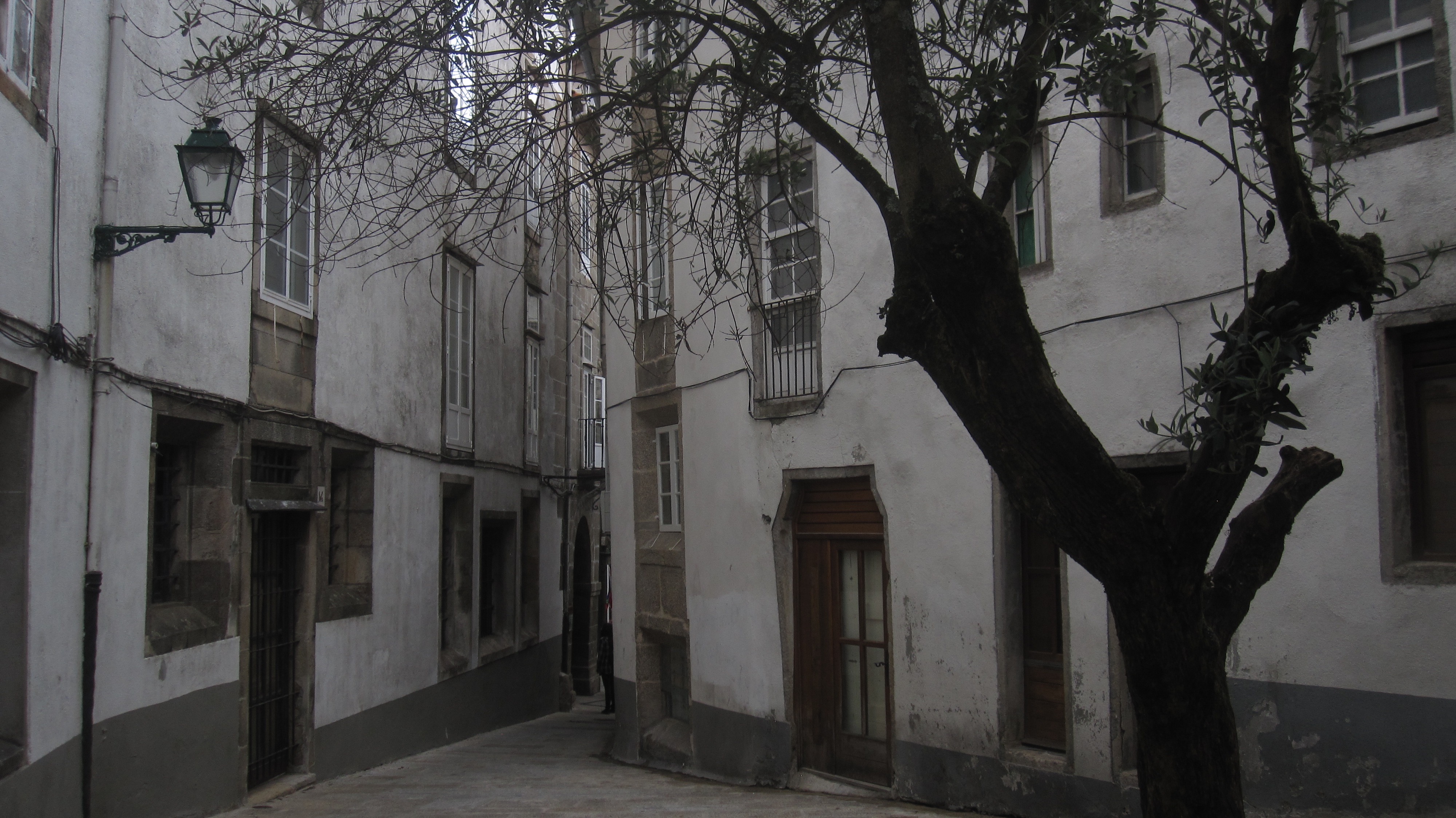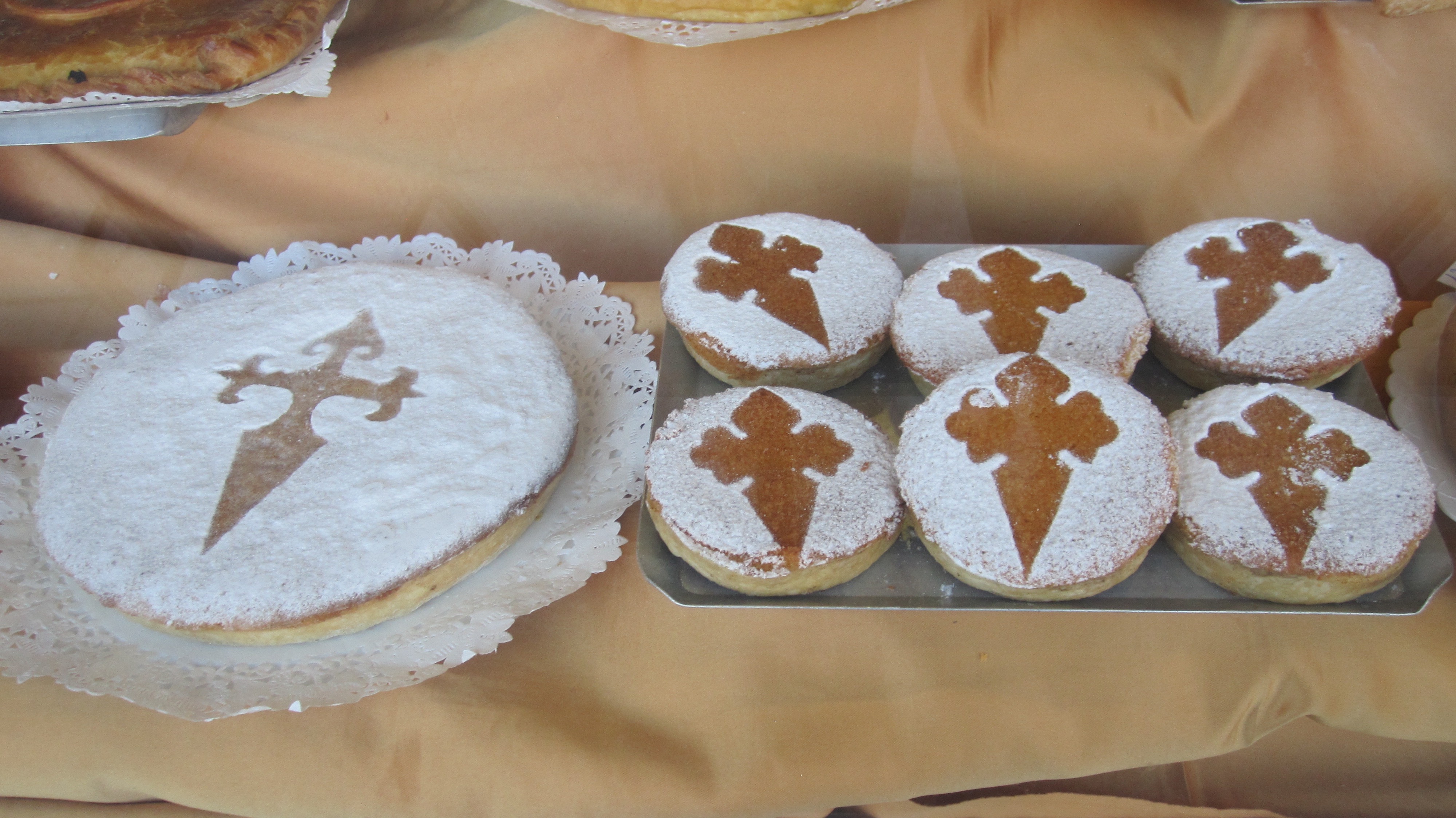The history of Santiago de Compostela is closely connected with the “discovery” of the burial ground of St. James in 825.
However, this place had high cultic relevance already 3000 years ago and was used as a cultic place by Celtic and Roman people.
Besides Jerusalem and Rome, Santiago is one of the most important Christian pilgrimage sites. Nowadays, most of the pilgrims walk for different reasons.
Walking into the town
Monastery San Martiño Pinario
My memory of Santiago from five years ago was not good – too many people, too much confusion. I was not looking forward to my arrival. However, it turned out to be different. This time, I saw the harmony and beauty of the town. Every step brought a new surprise, a new viewpoint. The angles of the buildings constantly changed; there was movement in the stability of this heavy rock. Many musicians played at different places and corners – often they played the bagpipe, the traditional Galician instrument. This added to the vitality of this town.
Arco de Palacio leading to Plaza de Obradoirol
Musicians under the walkway of the Palacio Gelmirez,
The old town of Santiago de Compostela is completely built out of granite. For hundreds of years, stone workers from all over Europe worked on the huge place in front of the Cathedral (Plaza del Obradoiro) to cut granite for the many different buildings. The sculptors cut out of the hard granite most delicate figures visible on doorways and facades.
Plaza de las Platerias (silversmith), south entrance of the Cathedral
King David by Master Esteban (13th century),
Part of the Romanesque doorway on the south side.
View from the interior court of the university to the different towers of the Cathedral
Inner court of the university
In order to get the Compostela, a certificate of having walked without interruption the last 62 miles to Santiago, the pilgrim has to show the pilgrim’s passport. The lines to get the certificate are often long.
Long line of pilgrims in front of the Office de Peregrinos
The Cathedral of Santiago in its recent appearance goes back to the 12th century. It was planned for the masses of pilgrims, who needed and wanted to spend the night in the church – there was nothing else around. In order to clean body and soul, the 80kg heavy incense burner (largest in the world) called Botafumeiro was installed a few centuries later.
Just by coincidence, I entered the church when they started to swing the Botafumeiro. The smell was magical. A nun was singing one of my favorite songs, a simple Latin melody of “Ubin Caritas et Amor” (where charity and love are), a song my family was singing at the grave of my mother. I was deeply touched. Hugging the 12th century statue of St. James is also a tradition I followed. However, in my mind, I hugged the hugs of the millions of people who had been there in the past. This was for me the special experience.
Transept of the Cathedral
Botafumeiro swang by the tiraboleiros to reach the vaults of the transept
Starting the burning of the incense
Botafumeiro
There are many culinary possibilities in Santiago. In the evening, I went to the restaurant Casa Manolo. Just by coincidence, I met a group of pilgrim friends I got to know on the Camino Primitivo. Synchronicities are normal on the Camino.
Casa Manolo, one of many restaurants for pilgrims
Tarta de Santiago, an almond cake
Last year, 238,000 pilgrims from all over the world came to Santiago de Compostela.
People living in this town seem not to be affected by this stream of pilgrims. They follow their traditions – like going shopping to the market.
Silhouette of the Cathedral
Plaza Obradeiro with the Hostal de los Reyes Católicos





















